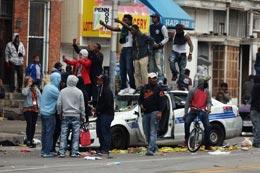America’s slow-rolling crisis

Guest Commentary
By Arun Kumar
Even with an African-American president in the White House, it's a still a hard day's life for the blacks 150 years after Abraham Lincoln freed the slaves and 50 years after two landmark legislations outlawed racial discrimination.
With a population of 45 million, blacks make up about 14 percent of the total US population of about 320 million, but they have a much smaller share of the nation's economic pie.
Though from the first African-American President Barack Obama down, a handful of blacks have made it to a few high places, a majority of them are still far less educated and engaged in low paying jobs. With a poverty rate of 27.2 percent in 2013, almost double of the national figure of 14.5 percent, they generally live in poor neighbourhoods, many of them come from broken homes raised by single mothers.
According to the census bureau, the annual median income of black households in 2013 was $34,598, compared with the nation at $51,939 and almost one third of $100,547 of Indian Americans, the country's top earners.
Though 83.7 percent of blacks 25 and over had a high school diploma or higher in 2013, only 19.3 percent of this group had a bachelor's degree or higher. And as the influential New York Times recently reported "African-American men have long been more likely to be locked up and more likely to die young" leaving what it called some 1.5 million missing black men in the US.
Before Baltimore, a city of 600,000, about two thirds of them black, erupted in riots and violence last week over the death of Freddie Gray, a 25-year-old black man in police custody, US had witnessed a spate of protests over such incidents.
There have been at least 14 major instances of a white policeman shooting dead a black person since 17-year-old Trayvon Martin was fatally shot on Feb 26, 2012 in Sanford, Florida. And in all of them policemen have gone scot-free.
Baltimore was different in the sense that City prosecutor Marilyn J. Mosby in an "unexpectedly speedy and sweeping" and "bold gesture" announced charges against six police officers involved in the April 12 arrest of Gray, and helped defuse tension.
Elated protestors celebrated her action with chants of "no justice, no peace, no racist police" at what was billed as a "victory rally" and as peace returned Baltimore Mayor Stephanie Rawlings-Blake Sunday lifted a city-wide night curfew.
But winning conviction against the police officers may not be that easy in the face of a "national history of police acquittals," to cite the New York Times.
An analysis of such cases since 2005 by Phillip Stinson, a criminal justice professor at Bowling Green State University and the Washington Post, shows that "of the 54 officers prosecuted in a death without a firearm, only 20 percent have led to charges."
A 2014 analysis by investigative journalism site ProPublica of 1,217 fatal police shootings from 2010 to 2012 showed that young black males were at 21 times greater risk of being shot dead by police than their white counterparts.
Blacks, age 15 to 19, were killed at a rate of 31.17 per million, while just 1.47 per million white males in that age range died at the hands of police, it said. Not only that black boys killed were disturbingly young.
There were 41 teens 14 years or younger reported killed by police from 1980 to 2012. As many as 27 of them were black; 8 were white; 4 were Hispanic and 1 was Asian, it noted.
Mostly white officers were involved in the killing of all those black men and boys, Pro Publica said though in hundreds of instances, black officers, too were involved.
"Black officers account for a little more than 10 percent of all fatal police shootings. Of those they kill, though, 78 percent were black," it said.
Baltimore's eruption follows decades of systematic failure, on what President Barack Obama has described as "a slow-rolling crisis" of black men dying at the hands of police in America.
"Sadly, when these incidents happen, we have a sort of fake and fleeting national conversation about police misconduct and race relations," wrote Time columnist Tavis Smiley."And then we return to business as usual. Until it happens again."






